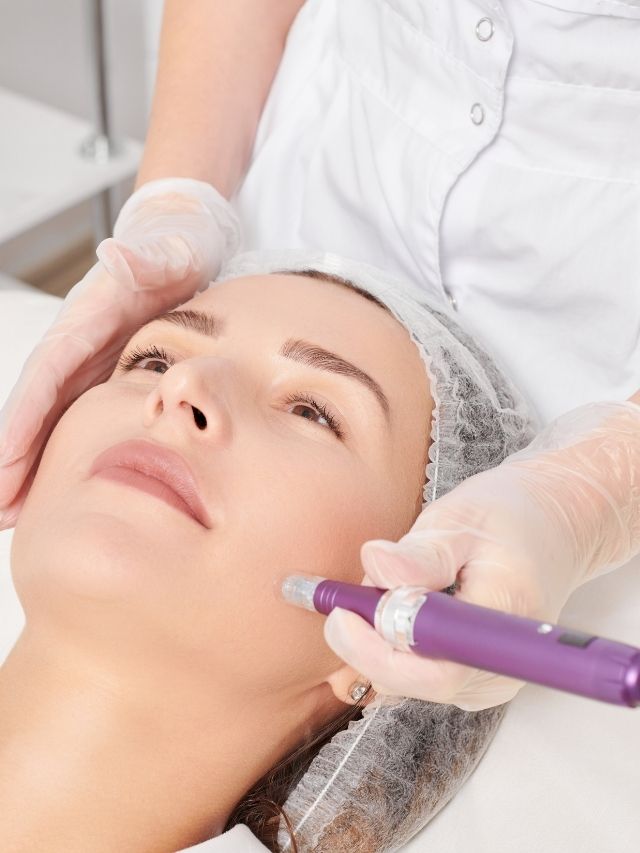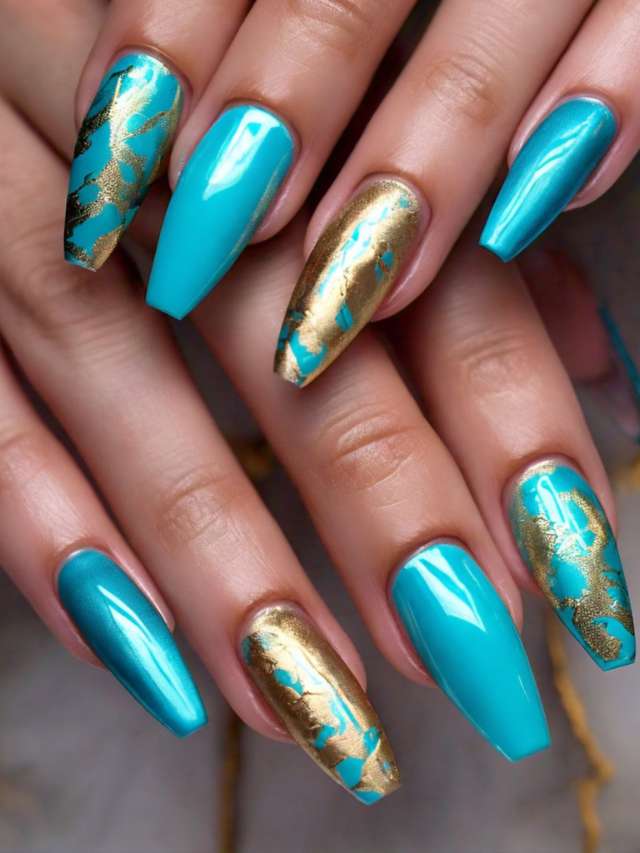What Does Your Face Look Like After Microneedling?
Do you ever wonder what does your face look like after microneedling?
Microneedling, one of the most popular skin rejuvenation treatments, is a minimally invasive procedure that can help address a variety of skin concerns, such as acne scars, fine lines, and stretch marks.
We are here to tell you all about the microneedling procedure, its side effects, and what to expect from your skin after treatment.
Here is the scoop on the answer to the question, what does your face look like after microneedling?
What is Microneedling
Microneedling is a minimally invasive skin rejuvenation treatment that triggers the natural healing process of your skin by creating microscopic punctures.
This procedure promotes collagen production and can help improve various skin conditions like fine lines, wrinkles, acne scars, and stretch marks.
Understanding Microneedling
In the microneedling treatment, tiny needles create controlled micro-injuries on the skin, stimulating collagen production and the body’s natural healing process.
Some also call this process collagen induction therapy. The treatment can improve skin texture, tone, and overall appearance.
The procedure can vary based on the needle length used, the type of microneedling device, and whether it is at-home microneedling or in-office microneedling.
Microneedling and Skin Concerns
Microneedling is effective for various skin types and people use it to treat a range of skin issues.
The treatment can reduce the appearance of acne scars, age spots, and fine lines by promoting new skin growth and cellular turnover.
It also improves the appearance of stretch marks by enhancing elastin production.
The Microneedling Procedure
The microneedling session begins with the application of a topical numbing cream to minimize discomfort.
Then, a microneedling device, such as a derma roller, moves across the skin, creating tiny punctures in the top layer of your skin.
The treatment area usually experiences pinpoint bleeding, but it stops by the next day.
Aftercare and Recovery Process
Proper aftercare is crucial to achieve the best results and avoid adverse effects. You should use a gentle cleanser and lukewarm water to clean the treated area.
Then, skincare products containing active ingredients like hyaluronic acid, growth factors, and vitamin C serum should be applied.
Avoid direct sun exposure, strenuous exercises, and skincare treatments like chemical peels and dermal fillers for the first few days to minimize the risk of infection and skin irritation.
What to Expect After Microneedling
The first day after microneedling, you might experience skin redness similar to a sunburn.
However, with proper skincare routine and care of your skin, most of these symptoms subside within a few days. Your skin might feel dry, but applying a moisturizer can help.
What Your Face Looks Like After Microneedling
The Immediate Aftermath
Immediately after the microneedling session, your facial skin might appear red and feel sensitive, similar to a mild sunburn.
Minor swelling and pinpoint bleeding are also common, but these side effects are typically short-lived.
The treatment triggers a breakdown of the stratum corneum, the top layer of the skin barrier, to stimulate the body’s natural healing process.
This might lead to temporary dry skin, but remember, this is your body working its magic.
First Few Days
In the first few days following the treatment, you might notice a difference in the appearance of your skin.
As platelet-rich plasma and other growth factors are stimulated, they begin to repair the skin, improving blood circulation and accelerating cell turnover.
During this period, your skin might start to flake, but don’t worry, this is a normal part of the process. It’s the old, damaged skin making way for the new, rejuvenated skin.
Microneedling and Sensitive Skin
Microneedling can be beneficial for sensitive skin, but it’s essential to use the right skin care product post-treatment.
Stick to non-irritating ingredients and avoid harsh products with glycolic or lactic acid for the first few days.
An ice pack can also help to soothe any inflammation or discomfort.
Managing Breakouts
Some people experience acne breakouts after microneedling, primarily if acne treatments were part of their skincare routine before the procedure.
If you notice a breakout, don’t panic. This is often part of the purging process as your skin adjusts and starts to rejuvenate itself.
Makeup and Sun Protection
You can return to your standard makeup routine after 24 hours, but it’s recommended to use mineral makeup to prevent any potential irritation.
It’s also crucial to protect your skin from sun damage, so a broad-spectrum sunscreen is a must in your skincare regimen.
Ongoing Results
The appearance of your skin continues to improve over time with more treatment sessions. Microneedling treatments are typically spaced out every 4-6 weeks for optimal results.
After the first treatment, you might notice a brighter complexion and improved skin texture.
Over time, as collagen production ramps up, you’ll start to see a reduction in fine lines, acne scars, and other skin concerns.
Microneedling Variations
Enhancements in microneedling, like the addition of platelet-rich plasma (PRP) – known as a vampire facial – or using dermal rollers, can provide even better results.
Such treatment variations should be discussed with your healthcare provider or skin experts to tailor a treatment plan that best suits your skincare goals.
Glycolic Acid and Microneedling
Glycolic acid, a type of alpha-hydroxy acid (AHA), is commonly used in skincare treatments for its exfoliating properties.
However, it’s recommended to avoid using products that contain glycolic acid immediately after a microneedling session.
This is because the skin barrier is temporarily compromised after the procedure, making it more sensitive to active ingredients.
Nonetheless, after a few days when the skin heals, you may reintroduce glycolic acid into your routine to further boost cell turnover and skin rejuvenation.
Little Downtime, Big Results
One of the many reasons why microneedling is a popular skincare treatment is the little downtime it requires.
Typically, the skin will start to look and feel better within a couple of days post-treatment, allowing you to return to your regular activities soon.
This makes microneedling a convenient choice for those who want effective results without the lengthy recovery periods associated with more invasive procedures.
Microneedling and Medical Conditions
While microneedling is generally safe for most people, those with certain medical conditions should exercise caution.
Conditions like active skin infections, certain types of acne, and keloid scarring might make you a less ideal candidate for microneedling.
It’s important to disclose your complete medical history to your skincare provider before starting the treatment to ensure it’s safe and effective for you.
Clinical Trials and Microneedling
Clinical trials on microneedling have shown promising results in improving various skin conditions and concerns.
Also, studies have seen significant improvement in the appearance of acne scars, fine lines, and skin texture after a series of treatments.
These trials provide solid evidence of microneedling’s effectiveness, which is another good reason for its growing popularity.
Uses and Benefits of Microneedling
Microneedling is a minimally invasive procedure that has gained popularity for addressing various skin concerns.
It involves the use of tiny needles to create micro-injuries that trigger the body’s natural healing process.
Collagen Production
One of the primary benefits of microneedling is its ability to stimulate collagen production. Collagen is an essential protein responsible for keeping the skin firm, smooth, and youthful.
As we age, collagen production declines, leading to signs of aging such as wrinkles and sagging skin.
Microneedling treatments promote the synthesis of collagen, helping to restore the skin’s elasticity and reduce the appearance of existing lines and wrinkles.
Acne Scars and Stretch Marks
Microneedling is effective for some people in reducing the appearance of acne scars and stretch marks.
The process encourages the growth of new skin tissue which helps in fading the discoloration and texture associated with these blemishes.
Moreover, the increased collagen production helps to fill and even out depressed scars, giving the skin a smoother and more uniform appearance.
Fine Lines and Wrinkles
As mentioned earlier, microneedling can help reduce the appearance of fine lines and wrinkles by stimulating the production of collagen.
This leads to the tightening of the skin and an overall improvement in skin tone and texture.
Regular sessions of microneedling can help maintain these results, making the procedure an effective anti-aging treatment.
Hyperpigmentation and Age Spots
Microneedling can also address hyperpigmentation and age spots by promoting the regeneration of skin cells.
Through the healing process, the body replaces damaged skin with fresh, healthy tissue, thus reducing the appearance of dark spots and uneven skin tone.
This benefit makes microneedling an appealing option for those looking to achieve a brighter, more even complexion.
Microneedling is a versatile and minimally invasive procedure that can effectively target a range of skin concerns, including collagen production, acne scars, stretch marks, fine lines, wrinkles, hyperpigmentation, and age spots.
By eliciting the body’s natural healing response and promoting the synthesis of collagen, microneedling can help to improve the overall health and appearance of the skin.
Final Thoughts
Microneedling, with its ability to address various skin concerns and promote a youthful appearance, is a good idea for those seeking better results from their skincare routine.
However, it’s important to discuss with healthcare providers or skin care specialists, considering one’s medical history, skin condition, and aesthetic goals.
The final results usually develop after a series of treatments, spaced 4-6 weeks apart.
Remember, your journey to healthier, fresher skin is a marathon, not a sprint. So, be patient and let the magic of microneedling unfold.
For more great scoop, check out these articles:
















